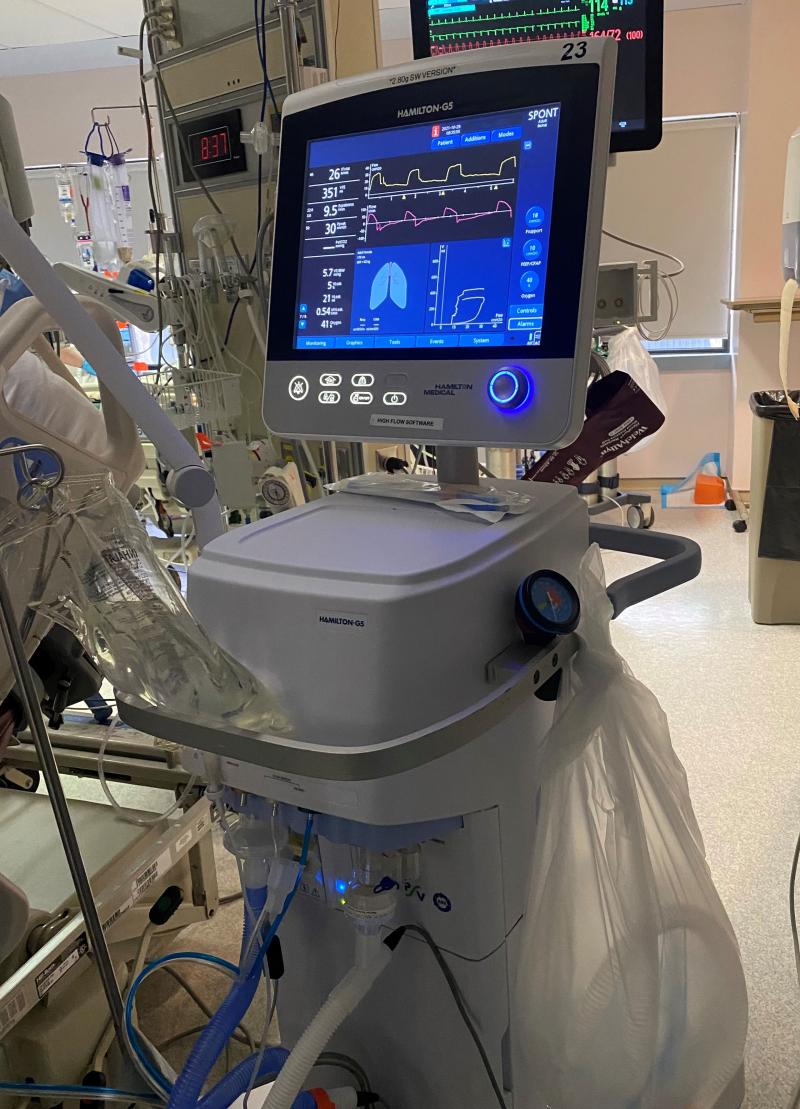Intubation means life support
What does it mean when you’re told your loved one will be intubated and put on a ventilator? Being intubated and put on a ventilator for lung failure means that your loved one’s lungs are so sick that they are not able to provide enough oxygen to the body.
Intubation means placing a breathing tube through the mouth and down the throat into the lungs. A ventilator is a breathing machine that takes over the work of breathing and increases the oxygen levels in the patient’s blood. Together, the breathing tube and the breathing machine (ventilator) provide the lungs with time to rest and recover from the COVID-19 virus. Being on a ventilator is a form of artificial life support.
“It can be very frightening for both the patient and their family when we tell them they need to go on a ventilator, that they need to be intubated in order to give their lungs and body assistance,” reports Dr. Susan Shaw, who is an ICU physician as well as the Chief Medical Officer for the Saskatchewan Health Authority.
When a patient needs to be intubated and put on a ventilator, first, the doctors will first give them a deep sedative and place the breathing tube in the right spot. Then, they will connect the breathing tube to the breathing machine (ventilator).
Patients can be on a ventilator with COVID-19 pneumonia for two weeks or longer. While a patient is on a ventilator, they are often sedated (placed in an induced coma). The sedation makes the patient comfortable and gives the lungs a rest. Slowly, as the lungs get better, it is possible to start waking the patient up to test the lungs and see if we can take out the breathing tube. Intubated patients cannot speak because the breathing tube goes through the throat and vocal cords.
“We have had to have very difficult conversations with patients and their families about intubation as the next stage of treatment for their lung failure many times during the COVID-19 pandemic,” Shaw noted. “Intubating a patient and putting them on a ventilator to help them breathe definitely means they are being put on life support, which is very scary to think about when it’s you or your loved one needing that treatment.”
The course of treatment for a person with the most severe lung failure from COVID-19 often includes being placed on a ventilator.
“It is a very serious intervention, and one that some are not strong enough to recover from,” Shaw said. “I have cared for young, otherwise well people that sadly die of COVID-19, especially during this fourth wave, because the lung rest from the ventilator was not enough to help their lungs recover from the Delta variant. Most of those people were unvaccinated.”
The COVID vaccines are the most effective way to avoid needing life support including intubation. Shaw and all of her ICU physician colleagues are urging everyone eligible to get their COVID-19 vaccines.
“The vaccines are safe and effective. You may still contract COVID-19, but the chances of you ending up in the ICU, needing to be intubated, are very small if you are fully vaccinated,” Shaw stated. “It’s an easy way to not need life support.”



